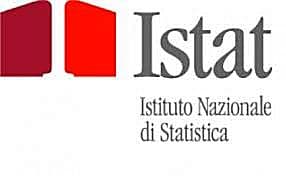
Corretto per gli effetti di calendario, a febbraio 2016 l’indice è aumentato in termini tendenziali dell’1,2% (i giorni lavorativi sono stati 21 contro i 20 di febbraio 2015). Nella media dei primi due mesi dell’anno la produzione è aumentata del 2,5% rispetto allo stesso periodo dell’anno precedente.
L’indice destagionalizzato presenta variazioni congiunturali positive nei raggruppamenti dei beni intermedi e dei beni strumentali (entrambi +0,2%); diminuiscono invece l’energia (-2,9%) e i beni di consumo (-0,5%).
In termini tendenziali gli indici corretti per gli effetti di calendario registrano, a febbraio 2016, aumenti nei comparti dei beni strumentali (+6,9%), dei beni intermedi (+2,8%) e, in misura più lieve, dei beni di consumo (+0,3%); segna invece una significativa diminuzione il comparto dell’energia (-4,6%).
As regards the sectors of economic activity, in February 2016 the sectors that recorded the greatest trend growth were those of the manufacture of computers, electronic and optical products, electro-medical equipment, measuring devices and watches (+8.3%), of the rubber and plastics articles, other non-metallic mineral processing products (+8.2%) and other manufacturing, repair and installation of machinery and equipment industries (+8.2%). The greatest decreases were recorded in the sectors of the supply of electricity, gas, steam and air (-7.5%), the manufacture of coke and refined petroleum products (-5.5%) and the textile, clothing, leather and accessories industries ( -2.4%).
ISTAT press release Periodo di riferimento Febbraio 2016 – Pubblicato lunedì 11 aprile 2016
SECTOR OF ECONOMIC ACTIVITY Production of basic pharmaceutical products and pharmaceutical preparations
Seasonally adjusted data
Feb 16/ Jan 16: -2,0
Dec 15-Feb16/ Sep 15-Nov 15: +0,1
Data corrected for calendar effects
Feb 16/ Feb 15: +1,3
Jan-Feb 16/ Jan-Feb 15: +3,5
NB: Seasonally adjusted data: data purified, using specific statistical techniques, from fluctuations attributable to the seasonal component (due to meteorological, customary, legislative factors, etc.) and, if significant, from calendar effects. This data transformation is the most suitable for capturing the cyclical evolution of an indicator
Data corrected for calendar effects: data purified, by means of specific statistical techniques, of the variability attributable to the composition of the calendar in the single periods (months or quarters) of the year, due to the different number of working days or specific days of the week contained therein and to the presence of civil and religious national holidays, fixed and mobile (Easter holidays) as well as leap year. The use of this data transformation allows for a more adequate understanding of both the trend variations (calculated with respect to the same period of the previous year) and the average annual variations.
Related news: Pharmaceutical production, the Farmindustria roadshow arrives in Campania
